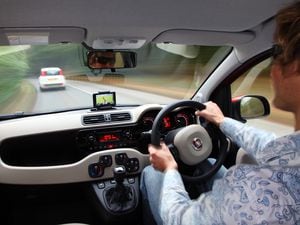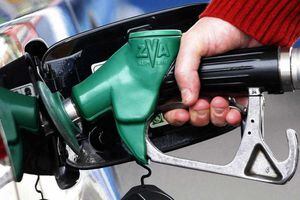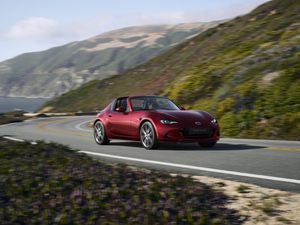Save money on fuel by being a better driver
Petrol and diesel prices are a nightmare for motorists. But official advice is now on hand to lessen the burden by adopting good habits on the road.

Need to travel but feeling the pinch? Petrol and diesel prices are soaring after a month that saw 6p added to an average litre of fuel.
The rise in May was the worst monthly rise for 18 years, according to the RAC.
Unleaded shot up from 123.43p to 129.41p a litre, putting the cost of filling up a 55-litre family car at £71.18. The increase equalled £3.29 in just one month, data from RAC Fuel Watch shows.
Today prices are higher still. The average price of unleaded in the Shrewsbury area today is 128.8p. For diesel the average is 132.5p.
The cost of a tank of diesel for a family car became £3.37 more expensive during May at £72.81.
It is depressing reading for people who live in a rural county like Shropshire who need a set of wheels to get around.
With public transport not an option in many areas, it is down to the car to do the day-to-day journeys. And the cost of running a vehicle has risen massively since the days of four star.
In 1989, the average cost of unleaded petrol was 38.5p per litre and diesel 36.1p per litre. By 2018 the cost per litre was 121.7p and 124.4p respectively.
There is some hope that the soaring price of crude oil may soon see a reverse, so in turn dropping prices at the forecourt.
In the meantime, the Government-backed Money Advice Service has placed a section on its website urging people to change their habits in order to save money.
Tips being put out the experts
Find the cheapest fuel:
The simplest way to cut the cost of everyday motoring is to buy your petrol or diesel from the cheapest service station in your area. Visit Petrolprices.com to compare the fuel prices at forecourts in any postcode. You can also calculate your annual fuel bill and sign up for an email alert to keep up to date with the latest fuel prices in your area.

Supermarkets often run petrol promotions offering discounts of 5p-10p off each litre of fuel if you spend a certain amount shopping in-store. You get a voucher to use at the supermarket’s service stations. You might find supermarkets in your area offer a good price on fuel, but be careful not to add miles to your journey just to save a penny a litre.
However, paying an extra few pence per litre at your closest forecourt can add pounds to your final bill. So, weigh things up carefully when looking at cheapest versus nearest.
Stay aerodynamic:
Wind resistance increases fuel consumption. Try to keep windows closed at high speeds and remove roof racks and boxes when not in use. Removing a roof-top cargo box can save as much as 20 per cent on fuel over a year.
Slow down:
According to the AA, dropping from 80mph to 70mph could save you up to 25 per cent in fuel. If you’re on smaller roads, slowing down from 70mph to 60mph could save another 10 per cent .
Maintenance:
Get your car serviced regularly to maintain engine efficiency and make sure you’re using the correct engine oil by checking the handbook.
Sensible driving:
Read the road ahead, anticipating the actions of other drivers and potential hazards. The less braking and acceleration, the less fuel used. For instance, drive smoothly in heavy traffic and avoid driving fast to catch up to the car in front, then having to brake.
Drop the revs:
Some motorists let the revs (revolutions per minute or RPM) run to 3,000 per minute (petrol car) and 2,500 (diesel) before changing up a gear. It’s more efficient to move up a gear at 2,500 (petrol) and 2,000 (diesel). Use high gears, such as fifth and sixth gears, sooner than later.
Look after tyres:
Well maintained tyres are essential for safe and economical driving. Check tyre pressures regularly, especially before a motorway journey. The RAC claims correctly inflated tyres can improve fuel consumption by up to two per cent.
Reduce weight:
A lighter car will use less fuel, so don’t drive around with unnecessary items in your boot and unless you’re on a long journey, consider running your fuel tank half full or less.
Speed bumps:
Braking hard, accelerating, then braking for the next speed bump is inefficient and uses extra fuel. Try to drive along at a steady 15-20mph instead.
Air con or open windows?
Air-conditioning increases fuel consumption, especially at low speeds. If it’s a hot day, use the air conditioning for high speed driving, but open the windows around town.
Drive a manual:
According to the AA, automatics use 10 per cent to 15 per cent more fuel than manuals. However, the gap is closing as modern, efficient semi-automatics become more popular. There’s also little difference between automatics and manuals on motorways.
Do the maths:
Work out how much fuel you use every week. Now try slowing down for a week and see what difference it makes. Find out the facts when thinking about whether you need a car, and make sure you know how much different types of cars cost to run.





